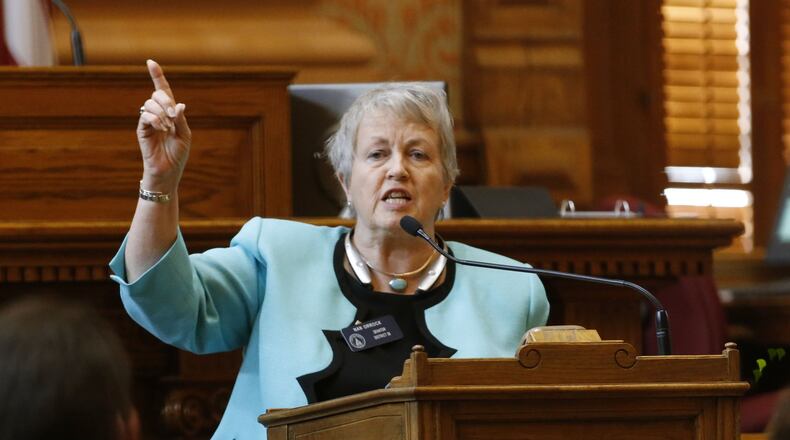State government pensioners have been lobbying for more than a decade to restore the cost-of-living increases that beneficiaries lost to the Great Recession.
On Friday, the Georgia Senate Retirement Committee moved forward with legislation that could give them the same annual bump retired teachers and University System staffers receive.
The panel voted to do an actuarial study on Senate Bill 167 by Sen. Nan Orrock, D-Atlanta. The study — which determines the cost of the change — must be completed before the committee can formally act on legislation during the 2022 session, which begins in January.
Supporters said it was an important first step toward bringing back COLAs that state retirees had previously received for decades.
“Nobody deserves a COLA more than those who dedicated their whole working careers to the state and its citizens,” said Jim Sommerville, president of the Georgia State Retirees Association and a retired Environmental Protection Division staffer.
He urged senators to “correct an injustice and restore a COLA to those who deserve it the most.”
Orrock said some of her new colleagues were surprised to learn that the state retirees used to get annual increases in their pensions.
“It’s absolutely time to get our arms around this and find a path forward,” Orrock said.
The average annual pension for the 54,000 retired state employee receiving benefits is $26,400, about $14,000 less than for the average Teacher Retirement System beneficiary.
While a few top former administrators in the system receive six-figure pensions, many ex-prison guards, agricultural inspectors, staff secretaries and child welfare workers receive payouts in the range of $15,000 to $30,000 a year.
Sommerville said in 1980, then-Gov. George Busbee agreed to put more into the retirement system in lieu of big pay raises at a time when inflation was rampant. For decades, the state granted COLAs to state retirees.
Teachers pay a higher percentage of their salaries into the system than state employees, but Sommerville said the COLAs were part of the deal offered when the state wanted to hold down pay raises.
The situation for ERS retirees changed in the late 2000s, when concerns were raised that the system was unsustainable, just as some lawmakers now say the state teacher pension system can’t last. Its director in 2007 told lawmakers the system faced a potential $16 billion shortfall in coming years as baby boomers continued to retire. Poor investment returns during the Great Recession additionally strained the system’s finances.
Lawmakers agreed to change it so that new employees received a lower pension and a 401(k)-type retirement plan. A vast majority of new staffers don’t stay long enough to vest and receive the full benefits of the plan.
Retired employees have said they feel mistreated by the decision not to provide cost-of-living adjustments. They note that retired teachers receive 3% annual increases to their pensions.
In recent years, with a push from the General Assembly, the Employees Retirement System board has voted to give its pensioners bonus checks.
The difference between a bonus check and a cost-of-living increase is significant over the long term. Bonus checks must be considered and voted on every year by the ERS board and may or may not be approved. Regular COLAs would permanently be built into how much retirees receive.
A $30,000-a-year pension in 2009 would be worth more than $44,000 next year if ex-state workers had received the same COLA as Georgia’s retired educators.
Much of private industry long ago eliminated pensions for workers, but they’ve long been seen as an important recruitment and retention tool for governments such as the state of Georgia. Supporters say the guarantee of a monthly check upon retirement makes up for years of working jobs that often pay less than similar ones in private industry.
The state has several pension systems, but the two biggest are ERS and the Teachers Retirement System. Combined, they have about $115 billion in assets.
As in any pension system, the payouts that former state staffers receive vary, based on their length of service and top salaries while on the job. Lower-paid workers, such as prison guards, receive much smaller pensions than somebody who retired after running a state agency and was making a big salary.
Pensioners can also receive Social Security.
About the Author
Keep Reading
The Latest
Featured




